|
Did you know that "sesquicentennial" means "150th anniversary?" As in, 2014 is the sesquicentennial of the Battle of Atlanta! The Chattahoochee River played an important role in the summer of 1864, as General William T. Sherman led the US Army on its march into Atlanta after the battle of Kennesaw Mountain. To teach visitors about these events, our park has developed 5 different trading cards. Each card shows a person, place, or event in the history of the Chattahoochee River during the Civil War. You may pick up a set of cards at the Island Ford Visitor Center in Sandy Springs, Georgia while they last. Below is the image of each card and the information included on the reverse side of the card. 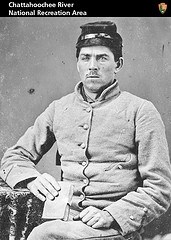
Samuel Wesley Power:A Family Torn Apart by WarSamuel Wesley Power grew up on a farm along the Chattahoochee River, helping to operate the family ferry. He joined the Confederate Army and found himself far from home. He endured the hardships, sufferings, and dangers of war, as did his family on the farm. With the battle at Kennesaw Mountain, the family could only wonder about their son’s safety and his whereabouts. Union troops came through the farm and commandeered the strategic river crossing of Powers Ferry. 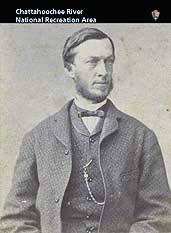
James Roswell King:Leader in Peace and War.In 1852, James Roswell King purchased land to develop Ivy Mill. While family members enlisted in the Confederate Army, James stayed behind to manage the family’s mills. In June 1863 King became a captain in the “Roswell Battalion.” As Union troops approached, King led the Battalion south to Atlanta, burning the Chattahoochee River Bridge behind them. 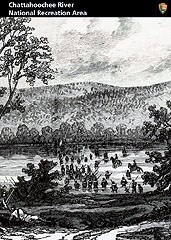
Shallowford:A Natural Crossing.To block the Union Army’s advance to Atlanta, Confederates burned the massive covered bridge crossing the Chattahoochee River at the town of Roswell. Undeterred, General Sherman and the Sixteenth Army Corps crossed the river on July 9, 1864 at Shallowford, a natural shallow ford just downstream from the town.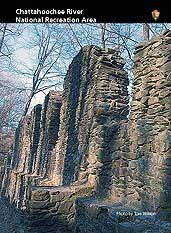
Marietta Paper Mill:From Riches to Ruins.The Marietta Paper Mill produced various kinds of fine papers before the Civil War. At the onset of the war, production included stock for Confederate currency and bonds. After the battle at Kennesaw Mountain, the mill was burned by Union troops en route to Atlanta. The mill was rebuilt after the war, operating until 1902. 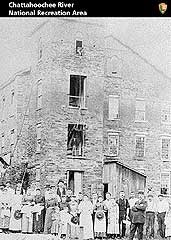
Women at War :Loyalists or TraitorsThe Roswell Woolen Mills operated along Vickery Creek near its confluence with the Chattahoochee River. The mill made cloth used for confederate uniforms. After Roswell was occupied by the Union Army, General Sherman gave orders that the mill workers, mostly women and children, were to be treated as prisoners of war. They were sent north on the railroad with no means of support. This act angered the citizens of the south and north nearly cost the General his command. |
Last updated: August 21, 2017
